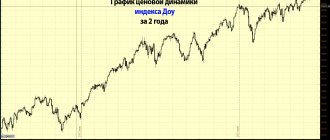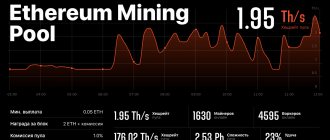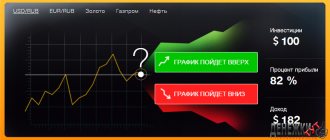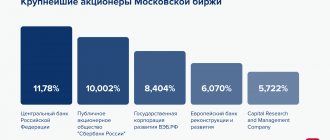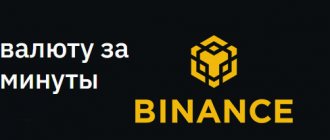From this article you will learn:
- What is an option
- What options are there?
- What options transactions are carried out on the stock exchange?
- What are the pros and cons of options
Many people think that the concept of “option” is used only in cases where we are talking about currency markets and stock exchanges. However, the scope of application of this financial instrument is much wider. And since the conclusion of an option contract is almost always associated not only with benefits, but also with risks, we propose to understand in detail what an option is, and also consider the mechanism of its operation using a specific example.
What is an option in simple words
An option is one of the most complex financial instruments used by exchange trading participants. An option is a contract that gives the holder a temporary right to sell or buy a valuable asset.
It turns out that the buyer acquires the opportunity to conduct transactions with the asset at predetermined prices. The purchase price of an option is called the strike.
It is worth noting that you must exercise your right to dispose of the option within a certain period of time. The expiration time of the option is called expiration, and if the terms of the contract are not fulfilled before the deadline, the option will remain unexercised.
What is an option contract? This is a document confirming the seller’s agreement to transfer to the buyer the right to dispose of a tangible asset. When concluding an option contract, the payment of an option premium is also discussed as insurance for the risk of an unfavorable change in the price of the underlying asset. The amount of the reward is not fixed and is determined by the purchase price of the option and the market value of the underlying asset, which changes regularly.
Option – what is it in simple words? Let's try to figure out what the essence of an option contract is using a specific example. A small cheese factory produces delicious cheese and sells it by pre-order, purchasing milk from the farmer. It is very important for the owner of a cheese factory to buy milk at an affordable price so that his business remains profitable, and the farmer has to offer the most favorable conditions to his client so that he does not go to competitors.
Based on the above, the owner of the cheese factory offers the farmer to buy from him the right (option) for 500 liters of milk from next year’s milk yield at the current price (15 rubles per liter). For this right, he will immediately pay a small premium of 4% (300 rubles) of the total value of the transaction (7500 rubles). The farmer, in turn, undertakes to sell the number of liters of milk specified in the contract at a price of 15 rubles per liter within the specified period.
A year later, several more farms appeared in the district, and in conditions of fierce competition, the price per liter of milk on the market dropped to 12 rubles. The owner of a cheese factory comes to the farmer with his option and says that he will not purchase 500 liters of milk for 7,500 rubles, since now it is possible to purchase goods from competitors on more favorable terms (for 6,000 rubles). It turns out that the owner of the cheese factory loses 300 rubles in this transaction, which will be recouped by the lower current price for dairy products.
From the example under consideration it is clear what an option to conclude a contract is. Thanks to an option, the buyer can secure his position by concluding a deal with the seller on favorable terms. In management, this risk is called “hedging”. Options contracts are very popular among speculators due to their high leverage, approximately 50:1. That is, shares are purchased for literally a few percent of their real value. Therefore, concluding an option contract is associated not only with great opportunities, but also with enormous risks.
Vanilla strategies
We know what the payout schedule for call and put options looks like, but there are a couple more obvious things to mention.
First, options can be either bought or sold. In financial market jargon, we say that we are long option if we bought an option, and that we are short option if we sold the option. The payoff for a short position in an option is equal to the payout for a long position with the opposite sign. Secondly, in order to buy an option (take a long position), you need to pay a premium, and the party that assumes obligations under the option (short position) receives a premium for this. Incl. It makes sense to consider not only the option payment, but also the total profit taking into account the premium.
We get four options. The dotted lines show graphs of the payout functions (without taking into account the premium), and the solid lines show the profit/loss function taking into account the premium:
The next simple idea is that options can be bought and sold not individually, but in combinations. Some combinations are so popular and important to the market that they have established names.
Balance Combination: Straddle
The first combination on our list is straddle. It turns out if you add up call and put options with the same strike. ATM straddle is especially popular, i.e. both options have a strike equal to the at-the-money forward.
In this picture, the dotted line shows the profit on individual options (taking into account the premium). And the solid line is their sum, i.e. profit for the entire structure, naturally also taking into account the bonus.
If you look at straddle as a speculative strategy on the price of the underlying asset, then if you buy straddle, you will make a profit if the price level of the underlying asset goes far enough from the at-the-money level, and it does not matter in which direction.
If you have already heard something about options and know what an option delta is, then you can clarify that for some underlying assets they prefer to use not an ATMF straddle, but a deltoneutral (DN) straddle. Those. The strike is chosen so that the delta of the put and call options adds up to zero.
Association game: Strangle
Look at this picture. What associations do you have?
The common name for a combination of vanilla options with this payout is strangle.
The English dictionary says that strangle is “to kill someone by pressing their throat so that they cannot breathe.” Those. we are talking about strangulation. Why such a brutal name arose for such a payout function, I don’t know. Apparently, this is how Wall Street options traders' associations worked in the early 20th century. On the other hand, it could have been worse. You could call it "chainsaw massacre", for example.
From the point of view of option strategies, strangle is a put + call, with different strikes. Similar to straddle, but due to the fact that in this combination the option strikes are in the OTM zone, these options are cheaper than ATMF options. Consequently, the whole combination will be cheaper than ATMF straddle.
For a speculator, strangle has approximately the same meaning as straddle, with the difference that strangle is cheaper, but to make a profit, the rate needs to move further away from the ATM level.
Types of options
There are several different classifications:
- Depending on the type.
- Depending on the asset.
- Depending on the circulation market.
- Depending on the style.
- Depending on the type of calculations.
There are two main variations of options – call and put.
What is a call option? This is a contract that gives the option holder the right to purchase an asset at a fixed price over a specified period of time. The purchase of such options is carried out with the expectation that the value of the subject of the contract will increase significantly. In other words, the option holder will buy the asset at the old price, although its real value will be much higher. A call option is called a call option.
Now let's try to answer the question of what a put option is. A put option gives you the opportunity to sell an asset at a set price within a certain time period. Transactions with put options will bring profit if the asset's value is predicted to decline in the near future. Thus, the option holder will be able to sell the asset at a specified date in the future at a pre-agreed price. This contract is called a put option.
Please note that entering into an agreement does not impose an obligation to dispose of the asset on the option holder. That is, the option holder can dispose of his right to manage the asset at his own discretion.
— Commodity – the object of this option is the right to purchase (sell) a specified quantity of a product at a fixed price before a certain date.
— Stock option – provides the opportunity to purchase securities of a certain organization at a fixed price during the time period established by the contract.
— A currency option provides the opportunity to dispose of a specified amount of foreign currency at a specific price during a time period agreed upon by the parties.
— Index option – the subject of the option contract is a multiple of the stock market index.
— Interest rate option – gives the right to receive a loan at an interest rate with a fixed upper limit or the right to invest funds at an interest rate with a fixed lower limit during a period agreed upon by the parties.
— Option on a futures contract – gives the right to purchase (sell) a futures contract at a specific price during a period agreed upon by the parties.
This basis involves dividing options into two groups: exchange-traded and over-the-counter.
What is an option on the stock exchange? Exchange options are standard contracts, the main parameters of which are determined by the exchange. Trading participants can only influence the size of the option premium.
Over-the-counter options involve concluding a contract taking into account the will of each participant in the transaction, i.e., on arbitrary conditions.
— American - an agreement according to which the purchaser of an option can exercise his right at any time before the expiration of the agreement.
— European - a contract, according to which the option holder has the opportunity to exercise the right to dispose of the asset after the contract period ends.
— Asian - an agreement that is executed at the weighted average price for the entire period of validity of the option from the moment of acquisition. The most prominent example of American options is exchange-traded, while over-the-counter options agreements are most often concluded in European or Asian style.
This basis involves dividing options into two types: with payment of a premium and without payment of the “insurance” amount. An option belonging to the first group implies a contract in which the option premium is paid to the seller at the time of conclusion of the agreement.
Top 3 articles that will be useful to every manager:
- Financial control at the enterprise
- Net profitability of the enterprise
- How to build a company's financial structure
Similarities and differences between an option and an option contract
The main difference between these two categories is the fact that the first is a transaction that precedes the conclusion of another, main transaction. The second is a transaction in itself and does not require the signing of additional documents. In other words, in the first case, one of the parties to the agreement has the right to demand the conclusion of a certain transaction with him on the agreed terms. In the second case, the participant demands immediate execution.
The similarities between these two designs are as follows:
- both of them imply the obligation of only one of the participants: one participant has the right to demand actions from the other, but has the right not to demand it, and the second does not have the right to refuse to fulfill it if a demand is received from him;
- if the requesting participant does not exercise his right, the paid remuneration is not returned;
- both the option and the option contract have a period - the requesting participant is limited in time and does not have the right to make a claim after the specified period.
Glossary of terms
- The strike is the price at which the option holder has the right to buy (sell) an asset.
- An option agreement is an agreement concluded between the parties to transfer the right to dispose of a certain asset.
- Expiration is the time when the option expires. After this period, the option purchaser loses his right to purchase (sell) the asset.
- Taker is the recipient of the option premium.
- Premium is an amount that serves as the seller’s “insurance” in case of a negative change in the price of the underlying asset.
- Call option is the right to purchase an asset in accordance with the conditions specified in the option agreement.
- A put option is the right to sell an asset in accordance with the conditions specified in the option contract.
- Exercise an option – exercise the right to purchase (sell) an asset.
How they are used in procurement under 44-FZ and 223-FZ
Transactions under 44-FZ are concluded through competitive procurement or by the unit method. supplier. There is no basis in contract law for the use of options. The initiative to grant such a right to government customers was not successful, and the draft amendments were not adopted at the legislative level.
Customers who work under 223-FZ actively use options for the supply of goods in procurement activities due to the fact that:
- at the request of the customer, changes to the irrevocable offer are permissible;
- the term for the conclusion and execution of the contract is any day that the customer chooses from the agreed period of time, that is, the term is flexible;
- the seller is obliged to fulfill his obligations, the customer has the right to backtrack by simply deciding not to take advantage of the transaction offer.
A recent example from tender documentation for the purchase of buses:
Customers enter into such agreements through competitive procurement or directly with a specific supplier. The mechanism for carrying out such procedures is prescribed by the institution in the procurement regulations. The agreement form and draft contract are attached to the procurement documentation or agreed directly with the supplier.
Commercial companies that are free from the need to work under 44-FZ and 223-FZ also use the opportunity to enter into agreements to provide irrevocable offers.
Example:
Types of options transactions
It is worth noting that only four options transactions can be concluded for one asset. Let's try to understand option agreements using a specific example. For simplicity and clarity, we will take the RTS index futures as the underlying asset.
- The first type of trade is to purchase a call option.
- The second type is to exercise a call option.
- The third type is to purchase a put option.
- The fourth type is to exercise a put option.
Purchasing a call option would be advisable if the index is expected to rise significantly in the near future. Let's say that now the RTS costs 400 points, and its expected price is 900 points. That is, by concluding an option contract, the buyer gets the opportunity to purchase RTS at a price of 400, at a time when its market value will be 900 points.
When should you sell a call option? Its sale will be profitable if the index is not expected to grow in the near future and if there is confidence that the purchaser of the option will not contact us for its exercise and will leave his deposit.
Transactions with put options are carried out according to the mirror principle. It is worth signing a contract to purchase such an option if the RTS index is expected to fall soon. Let's say we purchase a put option at a price of 900 points. And when the price of the index drops to 400, the counterparty will be obliged, at our request, to buy this index at a price of 900. When selling a put option, our profit will still be limited only by the amount of collateral that will remain if the counterparty does not ask us to exercise the option.
Why is this necessary?
Option as insurance
Essentially similar to an option and a familiar contract to everyone, it is insurance. Anyone who buys insurance receives the right, under certain conditions, to receive an insurance premium, and the insurance company undertakes to pay this premium. And here are a couple of examples.
Business Koli
Kolya is the owner of a jig production business.
Everyone needs a good jig, so Kolya is doing well. He entered the international market and sells jigs abroad. For example, production is located in a country where the currency XXX, widely known in academic literature, is used, and jigs are sold abroad to a country where another well-known currency, YYY, is used. Planning and managing the highly competitive jig business takes Kolya a lot of time and effort. And then there’s a new problem - the changing exchange rate of the YYY currency for the XXX currency. This exchange rate is designated XXXYYY.
Kolya knows the business well and can quite accurately say that in six months he will have a profit of 1 to 3 million YYY. They will need to be converted into XXX currency in order to pay salaries, rent, taxes and invest something in business development. What to do if during this time the XXXYYY rate goes up? Kolya is confident enough that he will definitely need to convert one million, so he can enter into a forward contract for one million XXXYYY. But there are another two million that he is not so sure about. Therefore, Kolya buys a call option on the XXXYYY currency pair.
Kolya bought a call option and will receive a payment at expiration:
If at the time of option expiration the market exchange rate ST was less than the strike, i.e. ST < K, then it is not profitable to use the Kolya option; it is cheaper to simply exchange the currency at the current rate. The option does not impose any obligations on Kolya in this case. By analogy with insurance, the “insured event” did not occur.
But if the exchange rate goes up, then Kolya will definitely want to exchange the currency at a rate equal to the option strike, which in this case will be more profitable than the market one.
Petit speculator strategy
Options are also used in various stock trading strategies.
Petya is a stock speculator and he has a super-ML-AI-crystal-ball-algorithm that predicts that in a month the shares of some company XYZ will plummet in price. Therefore, Petya buys a put option on XYZ stock. Those. the right to sell a share at the rate (option strike).
If the stock price at the time of expiration of the option (ST) really turned out to be below the strike, then Petya can buy the share on the market cheaper and sell this share, taking advantage of the right that the option gives him. Thus, Petya will make a profit: .
But if the stock price nevertheless goes in the other direction and turns out to be greater than the option strike, then the Petit option gives nothing, and the option payout is zero.
Petya bought a put option and at the time the option is exercised he will receive a payment: .
These examples do not mean that a put option is only for speculators, and a call option is for hedging risks. If Petit’s model predicted an increase in the exchange rate, then he would need a call option, and if Kolya’s business had developed in such a way that he needed to plan a currency exchange in the other direction, then the choice would be a put option.
It can be seen that the practical use of options in speculative strategies on the exchange rate of the underlying asset only requires correctly guessing which inequalities will be true for prices in the future. It's not that difficult (just kidding). The same applies to the use of combinations of vanilla options, which will be discussed below.
Pricing in the options market
The theoretical price of an option is determined by the exchange, but this value is not final. As practice shows, the value of an option may change slightly during exchange trading.
The main parameters influencing the option price are:
- supply and demand;
- the value of the underlying asset;
- validity period of the option contract;
- volatility of the underlying asset;
- other parameters determined by the type of specific option.
When the value of the underlying asset changes, the theoretical price of the option is recalculated by the exchange, and the remaining limits are satisfied in order to equalize the indicators of the current and theoretical prices.
If the value of an option falls, the buyer is at a disadvantage because he will have to pay the option premium if the deal ends. In this case, the benefit will be on the seller's side.
But if the value of the option changes upward, the seller will not only return the entire premium, but will also have to cover the profit to the buyer of the option at his own expense.
The longer the term of the option contract, the greater the value of the option, and vice versa. It is worth noting that many options are fully vested at the end of the contract.
How to buy an option
To make options transactions, you will need access to the appropriate section of the Moscow Interbank Currency Exchange. Individuals can participate in exchange trading only through intermediaries - brokers.
If you are planning to increase your income by making options transactions, we recommend that you familiarize yourself with the approximate algorithm of actions:
- Decide on a brokerage firm.
- Register on the broker's website.
- Open a brokerage account.
- Top up your balance.
- Fill out an application to purchase an option.
Upon a superficial study of this issue, it may seem that making options transactions is a quick and safe way to increase your capital. However, in fact, an option is a complex financial instrument; before using it, you should carefully study all the nuances and assess the possible risks.
